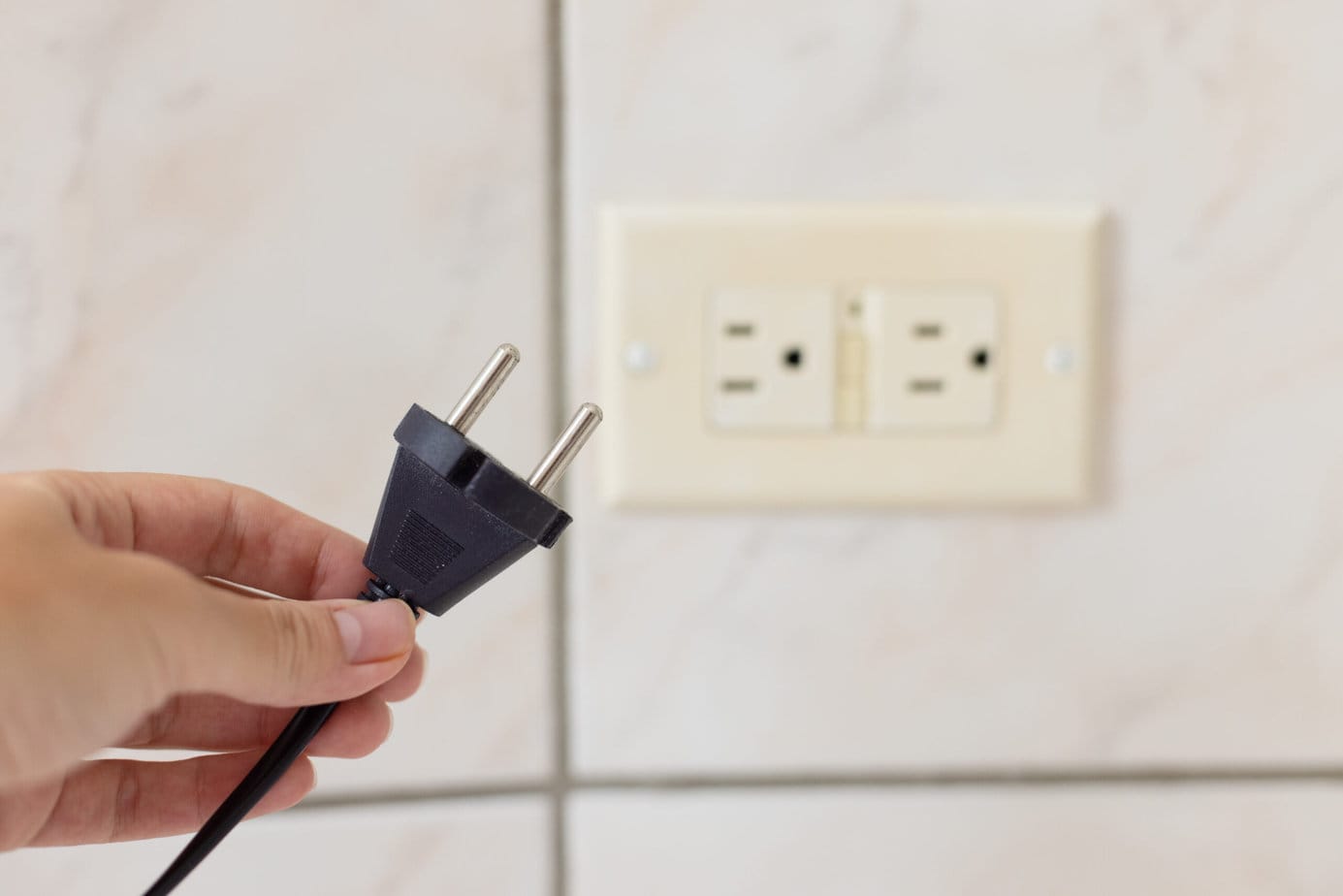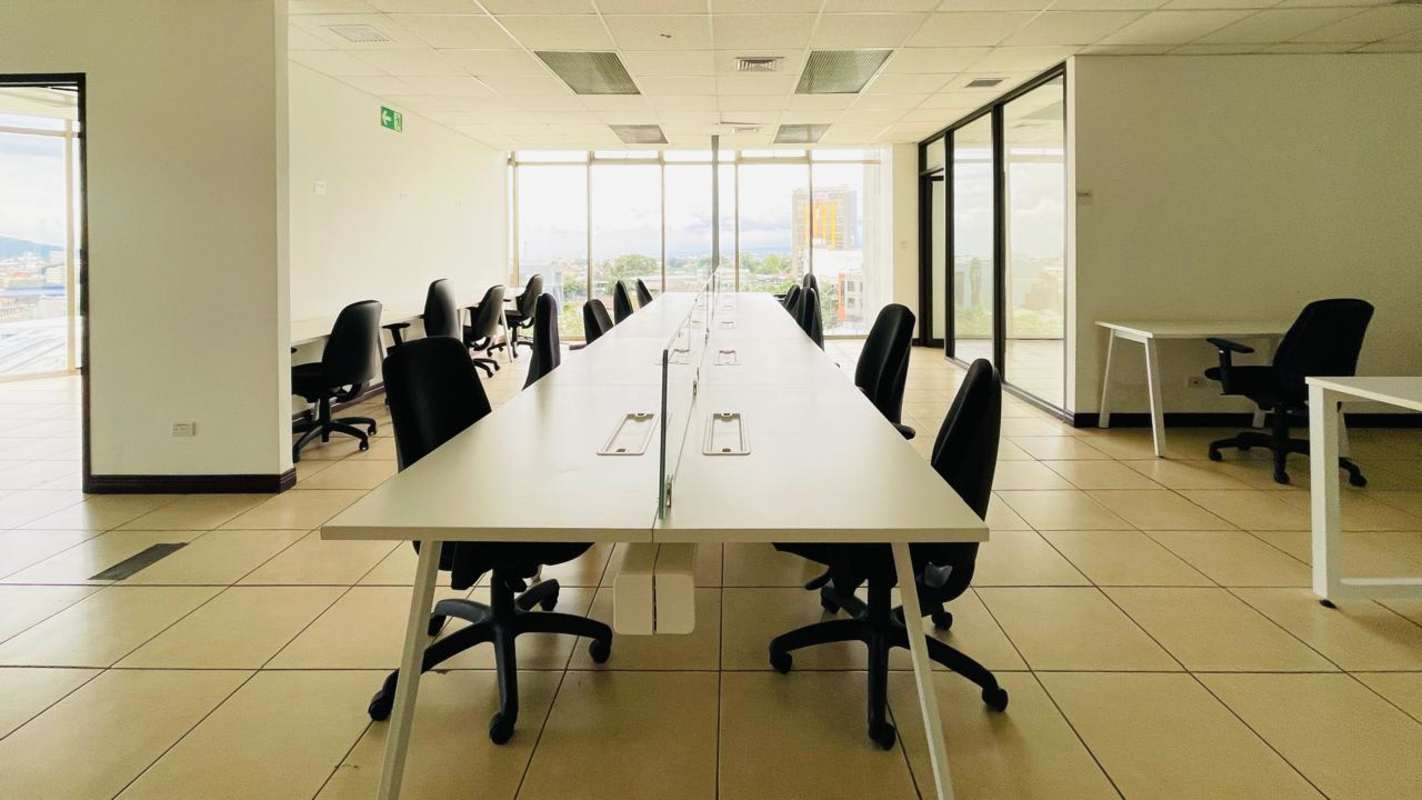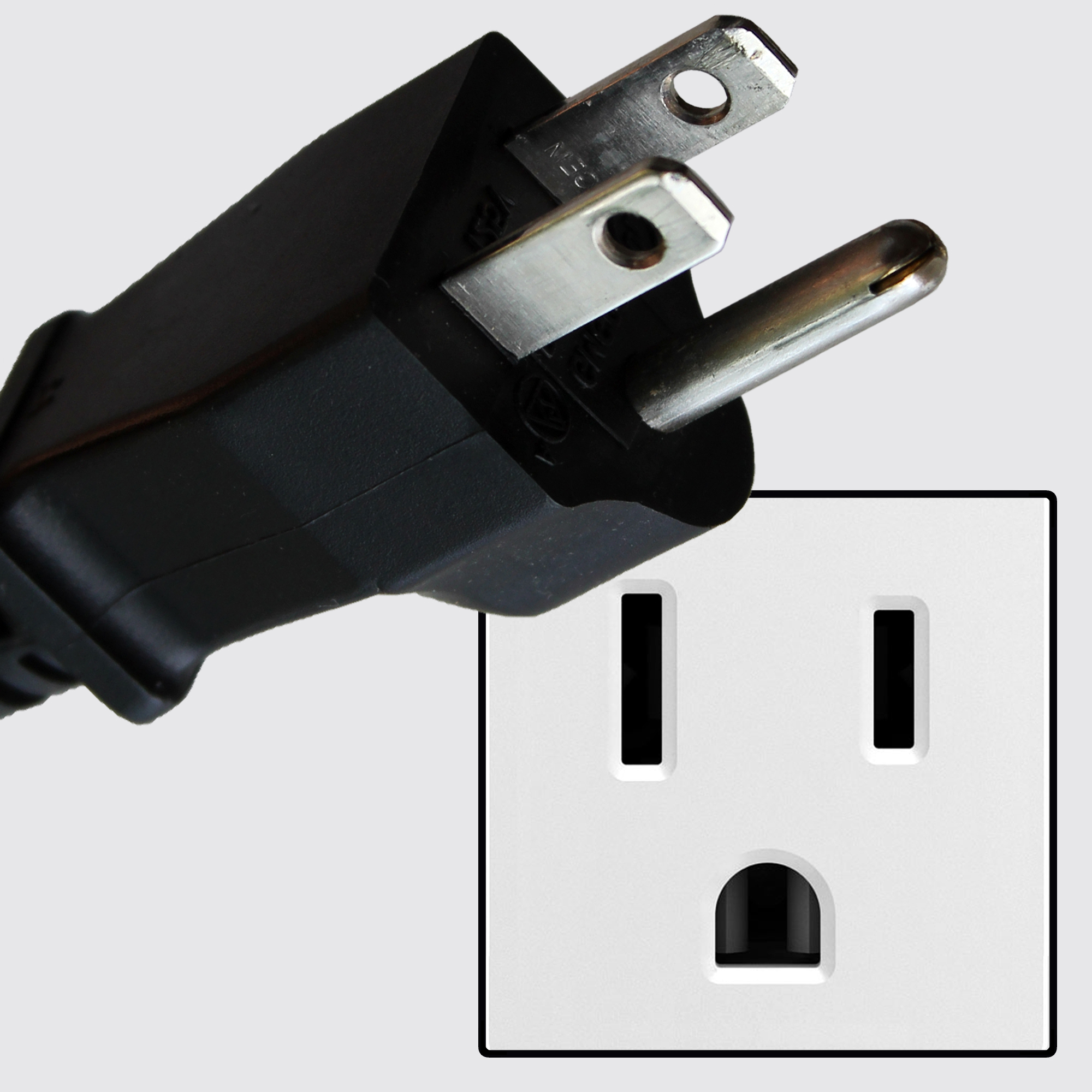Getting ready for a trip to Costa Rica often brings thoughts of lush rainforests, stunning beaches, and maybe even a volcano or two. You picture yourself sipping a cool drink, listening to the sounds of nature, and just soaking it all in. What many folks do not think about until the very last minute, or perhaps even when they are already there, is how to keep their phones charged, their cameras ready, and any other gadgets running. It is a common oversight, yet a pretty important one for a smooth travel experience.
You see, keeping your devices charged is a big part of staying connected, capturing memories, and even making sure you can find your way around. Imagine being out in a beautiful spot, wanting to snap a picture, and then realizing your camera battery is completely flat. Or perhaps you need to check directions to your next amazing stop, but your phone has simply run out of juice. It can put a bit of a damper on things, to be honest.
This little guide is here to help you get your head around what you need for electricity in Costa Rica. We will talk about the types of wall connections, the strength of the current, and what bits and pieces you might need to bring along. It is all about making sure you can plug in Costa Rica without any fuss, so you can focus on enjoying every single moment of your time there.
- Attack On Titan Levi
- Joely Richardson
- Gibby I Carly
- Is Emily Campagno Married
- Elvis Presleys Grandchildren
Table of Contents
- What's the Electrical Setup Like in Costa Rica?
- Do You Need an Adapter for Costa Rica?
- What About Current Converters for Costa Rica?
- Staying Connected - Advice for Your Costa Rica Trip
What's the Electrical Setup Like in Costa Rica?
When you travel to a different country, one of the first things to figure out is how their electrical system works. It is not always the same as what you have back home, and a little bit of preparation can save you from a lot of frustration. In Costa Rica, the way they deliver electricity to homes and hotels is pretty straightforward, but it helps to know what to expect. This way, you can make sure your devices get the juice they need.
Getting a Handle on the Costa Rica Plug Type
So, let's talk about the actual holes in the wall where you connect your devices. In Costa Rica, you will typically find that the wall connections look quite similar to those used in the United States and Canada. These are generally what people call Type A and Type B outlets. A Type A connection has two flat, parallel slots, while a Type B connection adds a round third hole for grounding. Most modern buildings and hotels will have Type B, which is good, as it offers a bit more safety for your electronics. This means that if your devices have the two-pronged or three-pronged flat pins common in North America, they will likely fit right in when you plug in Costa Rica.
Now, if you are coming from a place like Europe, Australia, or many parts of Asia, your devices probably have different shapes of pins. You might have round pins, or pins that are angled in a particular way. For those kinds of devices, simply trying to push them into a Costa Rican wall connection will not work. You will need something extra to bridge that gap. It is a bit like trying to put a square peg in a round hole, you know?
Knowing this ahead of time is a pretty good step. It lets you plan for what you need to carry with you. Most travel guides or websites will mention this, but it is always good to double-check. Getting the correct physical connection is the first step to making sure your phone or laptop can wake up in the morning.
Current Strength and Cycles - What You Need to Know
Beyond the shape of the wall connection, there are two other important things about electricity: the strength of the current, which we call voltage, and how often the current changes direction, which we call frequency. In Costa Rica, the standard voltage is 120 volts. The frequency is 60 Hertz. This is exactly the same as what you find in the United States and Canada. So, if your gadgets are from those places, they are usually good to go without any special help beyond the right physical connection.
However, if your devices come from regions that use a higher voltage, say 220 or 240 volts, you need to be very careful. Plugging a 220-volt device directly into a 120-volt Costa Rican wall connection might mean it does not work at all, or it works very slowly. It is almost like trying to run a race car on half the fuel it needs. More importantly, if you plug a device meant for 120 volts into a 220-volt system, which is not the case in Costa Rica but is good to know for other travels, it could cause serious damage to your gadget.
The good news is that many modern electronics, especially things like phone chargers, laptop chargers, and camera battery chargers, are what we call "dual voltage." This means they are built to handle a range of voltages, typically from 100 to 240 volts. You can usually find this information printed in small letters on the device's actual charger or near where the cord goes in. If you see something like "Input: 100-240V, 50/60Hz," then your device can handle the Costa Rican electrical supply just fine, provided you have the correct physical adapter to plug in Costa Rica.
Do You Need an Adapter for Costa Rica?
This is often the first question people ask when thinking about their trip. The short answer depends on where you are coming from. If your home country uses the same Type A or Type B connections and the same voltage as Costa Rica, then you might not need a special adapter for the physical connection. But for most other parts of the world, a little piece of plastic that changes the shape of your plug's pins will be a must-have item. It is a small thing to pack, yet it makes a very big difference.
Finding the Right Plug Adapter for Costa Rica
To figure out if you need an adapter, just take a quick look at the ends of your device cords. If they have two flat pins, or two flat pins with a round one underneath, then you are probably set for the physical connection. These are common in North America, as mentioned earlier. For everyone else, you will want to get an adapter that converts your specific plug type to a Type A or Type B. These are readily available online, at electronics stores, or even at some airport shops. You want one that specifically says it works with North American style outlets, or perhaps just lists Type A/B compatibility.
It is usually a pretty simple purchase, and they do not cost much at all. You might want to get a couple, especially if you have multiple people traveling or a lot of gadgets that need charging. Having an extra one can be quite handy if you misplace one or if you want to charge more than one item at a time in different spots around your room. Getting this small item sorted before you go means less stress once you are there and need to plug in Costa Rica.
General Adapters and Your Costa Rica Plug Needs
Some travelers prefer to carry what is called a "universal adapter." These clever little devices have different pin configurations that slide out or fold up, letting you connect to almost any type of wall connection around the globe. They are pretty convenient because they cover a wide range of situations, so you do not have to buy a specific adapter for each country you visit. For Costa Rica, a universal adapter would certainly do the trick, as it would include the Type A and Type B options.
However, it is worth remembering that a universal adapter only changes the physical shape of the plug. It does not change the voltage. So, if you have a device that is not dual voltage and needs a specific current strength, a universal adapter alone will not be enough. You would still need a separate current converter. Most people find that their phone chargers and laptop chargers are dual voltage, so for them, a simple adapter, whether specific or universal, is all that is needed to plug in Costa Rica.
Think about what devices you plan to bring along. If it is just your phone and a tablet, a single adapter might be enough. If you are bringing a hair dryer, an electric toothbrush, and a few other things, you might want a couple of adapters or a universal one. Planning this out a little bit ahead of time helps you avoid any last-minute scrambling when you arrive and realize your phone is running low.
What About Current Converters for Costa Rica?
This is where things can get a little more involved than just changing the shape of the plug. A current converter actually changes the electrical strength, or voltage, that goes into your device. As we discussed, Costa Rica uses 120 volts. If your device is only made for a different voltage, say 220 volts, then a converter is something you absolutely need to consider. Without it, you risk damaging your gadget or, at the very least, it will not work correctly.
When to Use a Converter with Your Costa Rica Plug
You will need a current converter if your electrical device is designed to work only at a voltage different from 120 volts, and it is not a dual-voltage item. Typically, items like hair dryers, curling irons, electric kettles, or some older shavers are common culprits here. They often have heating elements or motors that are very specific about the voltage they receive. If you are bringing one of these items from a 220-volt country, you will need a converter to step the Costa Rican 120-volt current up to 220 volts for your device.
It is very important to check the label on all your devices, especially those that heat up or have motors. Look for the "Input" specification. If it says "100-240V," then it is dual voltage and you do not need a converter. Just a simple adapter will do the job when you plug in Costa Rica. If it only says something like "220V" or "230V," then a converter is a must. Using a converter correctly will protect your valuable items and ensure they work as they should during your stay.
Converters can be a bit bulkier and heavier than simple adapters. They also tend to cost a bit more. Some travelers choose to simply buy a travel-sized version of these specific items, like a hair dryer, once they arrive in a country with the right voltage. This can sometimes be a simpler and less expensive solution than carrying a converter, especially for items you might not use every day. It is something to think about for sure.
Gadgets That Work Well with Costa Rica Electricity
The good news is that most of the electronic items we carry these days are quite flexible when it comes to electricity. Your smartphone, tablet, laptop, digital camera, and many e-readers are almost always dual voltage. This means they are built to handle a wide range of electrical strengths from different places. So, for these items, you just need the right physical adapter to connect them to the wall, and you are all set to plug in Costa Rica.
USB charging is also a very common way to get juice into your smaller devices. Many hotels and even some public places in Costa Rica now have USB ports available. If your device charges via a USB cable, you can often just bring a USB wall charger that is dual voltage, or even a portable battery pack. These battery packs are fantastic for keeping your phone charged while you are out exploring and cannot find a wall connection right away. They give you a lot of freedom.
It is always a good idea to test your chargers and adapters before you leave home, if you can. Just make sure everything fits together and seems to be in good working order. A little bit of testing can prevent a lot of frustration when you are far from home and really need your devices to work. You want to be able to capture all those amazing Costa Rican moments, right?
Staying Connected - Advice for Your Costa Rica Trip
Being able to keep your devices charged is a big part of a smooth and enjoyable trip. It means you can stay in touch with folks back home, look up directions to that amazing waterfall, or share your experiences on social media. A little bit of planning for your electrical needs goes a very long way in making your time in Costa Rica completely stress-free. It is a small detail, but it can make a real difference.
Charging Your Gadgets with a Costa Rica Plug
When you are ready to charge your phone or camera, simply attach your device's charging cable to its wall adapter. If your wall adapter has a different pin shape than the Costa Rican wall connection, then you will first attach your travel adapter to your wall adapter, and then insert the whole thing into the wall. Make sure everything feels secure and that the connection is solid. You do not want a loose connection that might not deliver a steady flow of current.
Always try to use a wall connection that is in good shape. Sometimes, older buildings might have connections that are a bit worn out. If a connection feels loose or looks damaged, it is probably best to find another one. Safety is always a good thing to think about when dealing with electricity. Most modern accommodations will have plenty of safe and reliable wall connections for you to use without any trouble at all.
If you are worried about having enough places to charge, consider bringing a small portable battery pack. These are great for topping up your phone or tablet while you are on the go, especially if you are spending a lot of time outdoors or in places where wall connections might not be readily available. They are a pretty simple way to ensure your devices stay alive throughout the day.
Extension Strips and Your Costa Rica Adventure
For those who bring many devices that need charging, a small extension strip or a multi-port USB charger can be a real lifesaver. Hotels sometimes only have one or two easily accessible wall connections in a room. If you have a phone, a tablet, a camera, and perhaps an e-reader, you will quickly run out of places to plug in. A compact extension strip lets you turn one wall connection into several.
Just make sure that any extension strip or multi-port charger you bring is also dual voltage, or that it is only used with devices that are dual voltage. Most modern ones are built for travel and can handle different current strengths. This way, you can charge all your items at once, often from a single adapter, which is very convenient. It saves you from having to wait for one device to finish charging before you can start another.
Having an extension strip means you can set up a little charging station in your room. This keeps all your gadgets together and makes it simple to keep them ready for your next adventure. It is a small thing to pack, but it can make a big difference in how smoothly your days go. So, you can truly enjoy every moment of your trip to Costa Rica, knowing your devices are always ready to go.
Related Resources:



Detail Author:
- Name : Jeffry Moen
- Username : bayer.lilliana
- Email : dangelo35@treutel.com
- Birthdate : 1986-04-09
- Address : 73495 West Terrace Kihnshire, CO 71590
- Phone : (281) 367-8096
- Company : Moen, Hill and Kunde
- Job : Engineering Technician
- Bio : Repudiandae est voluptate eveniet voluptates. Aut sequi ullam ipsum. Nihil soluta exercitationem alias odit neque rerum. Voluptas ut non dignissimos quidem. Animi aliquam harum eaque soluta.
Socials
tiktok:
- url : https://tiktok.com/@katherine3755
- username : katherine3755
- bio : Repudiandae amet et modi consequatur expedita.
- followers : 2946
- following : 924
twitter:
- url : https://twitter.com/katherine7649
- username : katherine7649
- bio : Aspernatur sit reiciendis ut quasi. Nostrum labore vel ut amet odio nesciunt. Laborum ut porro nostrum vitae. Et officiis ullam dolores delectus.
- followers : 4381
- following : 1579
linkedin:
- url : https://linkedin.com/in/katherine_corwin
- username : katherine_corwin
- bio : Error sint ea et expedita.
- followers : 4971
- following : 2748
facebook:
- url : https://facebook.com/katherine_id
- username : katherine_id
- bio : Corporis omnis dolorem tempora porro in deserunt.
- followers : 3774
- following : 2933